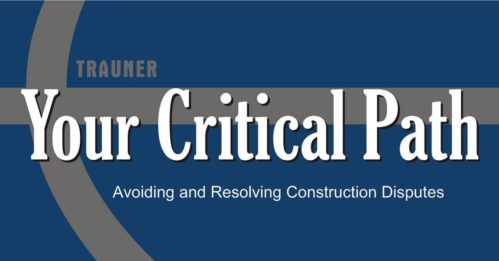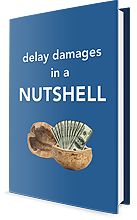How to Identify a Concurrent Delay, Part 1

In previous posts, we discussed why owners and contractors often argue for the existence of concurrent delay and how concurrent delay is defined. This post will be the first of two posts that will tackle how to identify a concurrent delay. As detailed in the previous post, in order for two delays to be concurrent and for one delay to negate one party’s responsibility against another’s, the delays must be concurrently critical. This means that both delays must be capable of delaying the project’s completion date.
As such, the first piece to the puzzle in identifying concurrent delays is related to how the “critical path” or “criticality” is defined. It is generally uncommon for construction contracts to define the term “critical path,” and this lack of a contractual definition means that we’re left to industry standard definitions to fill the void. Arguably, there are two industry standard definitions of the critical path: (1) the longest path, and (2) all activities with total float values of zero or less. However, there’s a clear trend that the longest path definition is the more readily accepted definition of the critical path, as the total float value-based definition can sometimes produce unreliable results due to the use of multiple work calendars that show or limit when particular work can occur during the year. Because work calendars identify the available working days for particular project work, the use of multiple calendars with different available working days limits the ability to rely on total float values, which are shown in workdays, alone to identify the critical path.
These two definitions of the critical path also provide drastically different opportunities to make concurrent delay arguments. To compare how these definitions of the critical path result in significant different concurrent delay results, consider the following example:
Assume a project is forecast to finish 60 workdays late. When the critical path is defined as the “longest path,” the project’s critical path is the longest path of work in the schedule network that forecasts when the project will finish. A commonly used analogy to illustrate this concept is that the longest path can be described as the longest pole in the tent. Therefore, in order for two delays to be considered concurrently critical, they both have to impact the critical path at the same time. Under this definition, that would mean the delays would have to both be on one work path: the “longest path.”
Whereas, if the critical path is defined as all activities with total float values of zero or less, the number of potential concurrent delays increases. Assume that in addition to the longest path, which has activities with total float values of -60 workdays, there was also a work path containing activities with total float values of -50 workdays. According to the definition of the critical path based on activities’ total float values, if unrelated delays impact these two work paths at the same time, then they would be considered as concurrently critical delays. This scenario could be further complicated by a third or fourth work path with negative total float values. If those work paths were delayed at the same time as the other two, determining excusability and compensability of the delays would quickly become a quagmire.
So, knowing how your contract defines the critical path, or doesn’t define it, can significantly impact when concurrent delays exist. Stay tuned for the next post in which we’ll discuss how to identify concurrent delays using the project schedule.

